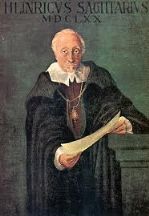|
Symphony
SRS SEASON ENDS WITH RESOUNDING TA-TA-TA-BANG
by Terry McNeill
Sunday, June 1, 2025
Symphony
YOUTHFUL VIRTUOSITY ON DISPLAY AT USO'S MAY CONCERTS
by Peter Lert
Saturday, May 17, 2025
Symphony
MYSTICAL PLANETS AND LIVELY GERSHWIN ORTIZ AT FINAL SRS CONCERT
by Peter Lert
Sunday, May 4, 2025
Symphony
VSO'S CONCERT MUSIC OF TIME, MUSIC OF PLACE
by Peter Lert
Sunday, April 27, 2025
Choral and Vocal
VOCAL ELEGANCE AND FIRE AT THE 222'S RECITAL APRIL 26
by Pamela Hicks Gailey
Saturday, April 26, 2025
CANTIAMO SONOMA SINGS AN INSPIRED GOOD FRIDAY MOZART REQUIEM CONCERT
by Pamela Hicks Gailey
Friday, April 18, 2025
DRAMATIC SHOSTAKOVICH SYMPHONY CLOSES PHILHARMONIC'S 25TH SEASON
by Terry McNeill
Sunday, April 13, 2025
LARGE COLLEGE OF MARIN AUDIENCE GREETS STOPHER ARTISTRY
by Terry McNeill
Saturday, April 5, 2025
Chamber
FRISSON DELIVERS SHIVERS OF DELIGHT
by Abby Wasserman
Sunday, March 30, 2025
OLD AND MOSTLY NEW IN SRS MARCH CONCERT IN WEILL
by Peter Lert
Saturday, March 22, 2025
|
 |
 Heinrich Schütz |
CIRCA 1600 CHORUS SINGS MAGNIFICENT SCHÜTZ WORKS AT HOLY FAMILY CHURCH
by Joanna Bramel Young
Saturday, November 13, 2010
A small but appreciative audience enjoyed a concert of vocal works by the great early Baroque master Heinrich Schütz Nov. 13 at the Holy Family Episcopal Church in Rohnert Park. Accompanying the fourteen singers, skillfully directed by Robert Worth, were John Dornenburg on the G violone and Susan Harvey on the positiv organ.
Robert Worth is well known to Sonoma County audiences as a Music Department Professor at Sonoma State and director of several of the area’s finest choral ensembles. A recent retiree from the University, Mr. Worth in September formed the chamber chorus Circa 1600, focusing on the rich repertoire that spanned the late Renaissance and the early Baroque periods (the 16th and 17th centuries). The Chorus also occasionally moves backward to the 15th and forward to the 18th centuries, and they are often joined by members of the Live Oak Baroque Orchestra.
Heinrich Schütz was a perfect choice for the ensemble, in that his life spanned the Renaissance and Baroque periods. Schütz (1585-1672) was born in Germany one hundred years before Bach. When he was twenty-four he spent years in Italy studying with the great Venetian master Giovanni Gabrieli, and in 1611 he wrote a group of Italian madrigals dedicated to his renowned teacher, ultimately bringing the “new” Italian style of playing to Germany. The program Saturday evening opened with some of Schütz’s later religious motets called Geistliche Chormusik (Spiritual Choral Music), which showed off the choral ensemble’s considerable abilities. Although composed in German contrapuntal style the music also reflected some of the newer elements of the rising Italian forms. The music mirrored texts beautifully: in the motet So fahr ich hin zu Jesu Christ (Thus I go hence to Jesus Christ) there are moving, overlapping ascending and descending phrases that capture the great humanity of the music. At the words So schlaf ich ein und ruh fein (Then I fall asleep and rest soundly) one can feel the music following the meaning of the words. The vocal ensemble was uniformly solid and very expressive in these magnificent motets. Endings of each work were carefully tuned and often tapered down to a pianissimo.
This reviewer especially enjoyed Selig sind die Toten (Blessed are the dead). The violone doubled the strong bass voices, and the soft deep sonority of the Baroque chamber organ added to the tapestry of textures. The violone in G is a magnificent looking instrument, slightly larger and “fatter” than the better known viola da gamba. Mr. Worth, besides conducting, also added his fine bass voice to the ensemble.
The second set of works on the program were a group of five-voice madrigals, written while the youthful Schütz was in Italy. Madrigals were meant to be sung a capella – without instrumental accompaniment. He composed only one book of madrigals, but his substantial talents for musical variety and his knowledge of the Italian language make these secular works delightful. These madrigals, with their sudden change of mood and treacherously fast notes require an extremely facile group of singers. Sometimes the clarity of the parts was lost in the complex counterpoint and cascades of notes, but they still maintained their great variety of colors and emotion.
This reviewer’s favorite piece on the program was the last one, from Schütz’s own final work, the Schwanensang (Swan Song) for eight voices in two antiphonal choirs. The joyous triple rhythm with its many hemiolas (two against three rhythms) brought the evening to a jubilant close.
|

